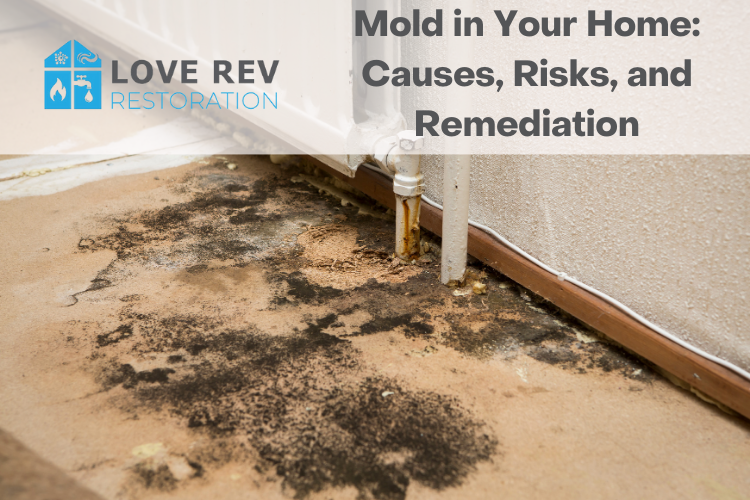Mold in Your Home: Causes, Risks, and Remediation
Mold is a ubiquitous part of the natural environment, playing a crucial role in breaking down organic matter. However, when mold finds its way indoors and starts growing in our homes, it can become a significant concern. As a homeowner, understanding the science of mold, its causes, health implications, and effective remediation is essential for maintaining a safe living environment.
The Science of Mold: How It Grows and Why It’s a Concern
Mold is a type of fungus that consists of small organisms found almost everywhere. These organisms thrive in moist environments and reproduce by releasing spores, microscopic particles that can endure harsh conditions and remain dormant until conditions are right for growth.
For mold to grow, it typically needs:
- Organic material: Such as wood, paper, or fabrics, as a food source.
- Moisture: Excess water or humidity creates the perfect breeding ground.
- Warmth: Most molds thrive in temperatures that humans find comfortable.
- Time: Mold growth can begin in as little as 24-48 hours under ideal conditions.
The primary concern with mold in homes is that its growth can damage structures and personal belongings. Moreover, mold releases spores into the air, which can cause health problems when inhaled.
Common Causes of Mold Growth in Homes
Several conditions can lead to mold growth indoors:
- Leaking pipes: Even a small, undetected leak can result in mold over time.
- Roof leaks: Damaged roof shingles or flashings can let water seep into the attic or walls.
- Flooding: Basements and ground floors are especially susceptible.
- Condensation: Cold surfaces, like windows or metal pipes, can condense moisture from the air.
- High humidity: Often seen in bathrooms, laundry rooms, and basements without proper ventilation.
- Wet clothes: Leaving wet clothes in a hamper or failing to dry them fully can be a mold catalyst.
Health Impacts of Mold Exposure
While mold is a natural component of our environment, an excess of it indoors can lead to a variety of health issues. The type and severity of symptoms can vary based on the mold species, the extent of an individual’s exposure, age, and their overall health.
Common health effects include:
- Allergic reactions: Symptoms may encompass sneezing, runny or stuffy nose, itchy or watery eyes, and skin rash.
- Asthma attacks: For those with asthma, mold can trigger more frequent or severe attacks.
- Lung infections: Some molds can cause lung infections, especially in individuals with weakened immune systems.
- Irritation: Mold can irritate the eyes, skin, throat, nose, and lungs, even in people who aren’t allergic.
Steps to Safely Remove Mold and Prevent Its Return
If mold has made its way into your home, here are the steps to address and prevent its recurrence:
- Assessment: Begin with a thorough inspection to identify all areas of mold growth. In cases of extensive mold growth or if mold is in the home’s HVAC systems, it might be wise to hire professionals.
- Protection: Wear proper protective gear: a mask, gloves, and eyewear. Ensure good ventilation in the working area.
- Isolation: Seal off the affected area to prevent mold spores from spreading to other parts of the home.
- Removal: Clean mold off hard surfaces with water and detergent. Porous materials like ceiling tiles or carpets might need to be thrown away if they become moldy.
- Drying: Ensure all cleaned areas are dried immediately. Fans and dehumidifiers can help.
- Repair leaks: Address the root causes of the moisture problem to prevent mold’s return.
- Reduce humidity: Maintain indoor humidity below 60% (ideally between 30-50%). This can be monitored with a moisture meter or hygrometer.
- Ventilation: Regularly ventilate areas prone to high humidity, like bathrooms and kitchens, and ensure the home has adequate ventilation overall.
Conclusion
Mold in the home is a challenge that many homeowners will face at some point. However, with knowledge and vigilance, it’s a challenge that can be overcome. Addressing mold concerns promptly and taking steps to mitigate its causes are essential for maintaining a healthy living environment. If ever in doubt, seeking the assistance of professionals can ensure a thorough and safe mold remediation process.


Recent Comments